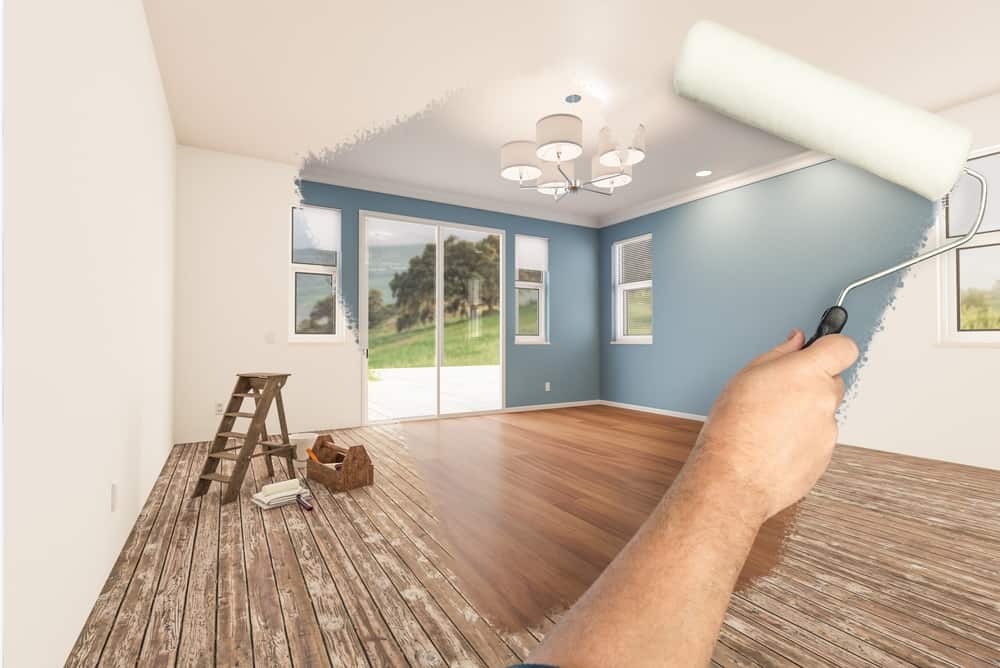Giving your home a fresh coat of paint is one of the easiest and most cost-effective ways to update its appearance and increase its value. Whether you’re painting the interior or exterior of your home, these top 10 tips will guide you through the essential steps of preparation, making sure you achieve a beautiful and durable result with gold coast painters.
1. Choose the Right Paint for the Job
Before you begin, it’s essential to choose the right type of paint for the surface you’re working on. There are various types of paint available, including water-based, oil-based, and specialty paints designed for different surfaces, such as wood, metal, or masonry.
If you’re painting the interior, water-based (latex) paints are great for walls and ceilings as they dry quickly and have low odour. For high-traffic areas like doors and trim, an oil-based paint may provide a more durable finish. On the exterior, consider weather-resistant paints designed to withstand the harsh Australian climate.
2. Gather the Right Tools and Equipment
Having the right tools is essential for a smooth, professional finish. The tools you’ll need will depend on the scope of your project, but for most painting jobs, the following items will be necessary:
- Painter’s tape
- Drop cloths or plastic sheeting
- Paint brushes (angled and flat)
- Paint rollers and trays
- Sandpaper or a sanding block
- Putty knife and filler
- Paint stirrers
- Step ladder
Taking the time to gather the right tools will help you work efficiently and minimise mistakes, saving time in the long run.
3. Clean the Surfaces Thoroughly
Before you even think about picking up a brush or roller, it’s important to clean the surfaces you intend to paint. Dust, dirt, grease, and grime can prevent paint from adhering properly, leading to an uneven finish or peeling over time.
For interior walls, use a damp cloth to wipe down surfaces, and for stubborn stains, a mild detergent and warm water can help. On exterior walls, you may need to use a pressure washer or a hose to remove built-up dirt and mildew. Ensure the surfaces are dry before proceeding with the next steps.
4. Repair Any Imperfections
Once your surfaces are clean, inspect them for any cracks, holes, or other imperfections. These need to be repaired before you start painting to ensure a smooth, even finish. Use filler or spackle to fill in small holes and cracks. For larger repairs, you may need a more substantial filler material or wood putty for wooden surfaces.
After applying the filler, use a putty knife to smooth it out, ensuring it’s level with the surrounding surface. Once the filler has dried, lightly sand the area to create a smooth surface for the paint to adhere to.
5. Sand the Surfaces
Sanding is one of the most important steps when preparing a surface for painting. Sanding smooths rough patches, removes old paint, and creates a texture that helps the new paint bond better. For interior walls, use fine-grit sandpaper, while for exterior surfaces, you may need a medium-grit sandpaper to remove peeling or cracking paint.
6. Protect Your Floors and Furniture
Protecting your floors and furniture is essential for keeping your home clean and avoiding costly cleanup. Lay down drop cloths or plastic sheeting to cover the floors, especially in high-traffic areas. Be sure to cover any furniture or items you can’t move. If you’re painting a room’s trim, windows, or ceiling, it’s a good idea to use painter’s tape to shield any areas you don’t want to paint.
It’s also advisable to cover light fixtures and hardware with plastic or painter’s tape to keep paint splatters at bay.
7. Use Painter’s Tape for Clean Lines
One of the most frustrating parts of painting is getting crisp, clean lines, especially around trims, windows, and doors. Painter’s tape is an excellent tool to help you achieve this. Be sure to apply the tape carefully along edges and corners, making sure it’s pressed down firmly to prevent paint from seeping underneath.
When it comes time to remove the tape, do so while the paint is still slightly wet to avoid peeling. This will give you a sharp, professional-looking finish.
8. Prime the Surface
Priming is essential, particularly for surfaces that are porous, stained, or previously painted with dark colours. A good primer helps seal the surface and provides a uniform base for the paint to adhere to.
If you’re painting over a new surface (such as new drywall or plaster), a primer will help the paint go on more evenly and reduce the amount of paint needed. For surfaces that have been patched or repaired, a primer helps conceal any filler marks and ensures the paint goes on smoothly.
For exterior surfaces, consider using a primer with added mildew resistance to prevent future growth. Always choose a primer that matches the type of paint you’re using.
9. Check the Weather (for Exterior Painting)
If you’re painting the exterior of your home, the weather plays a crucial role in the success of your project. Painting in humid or rainy conditions can cause the paint to take longer to dry and may lead to bubbling or streaks.
Ideally, choose a dry day with moderate temperatures for the best results. Avoid painting in direct sunlight or extreme heat, as this can cause the paint to dry too quickly and lead to an uneven finish.
10. Start Painting!
Now that you’ve prepared the surface, it’s time to start painting. Begin by cutting in around edges, corners, and trim with a brush. Once you’ve completed the edges, use a roller to cover the larger flat surfaces. When applying paint, use long, even strokes and work in small sections at a time to avoid the paint drying too quickly.
Conclusion
Preparing your home for a fresh coat of paint may seem like a time-consuming task, but taking these crucial steps ensures the final result will be worth the effort. Proper surface cleaning, repairing imperfections, priming, and using the right tools will not only make your paint job last longer but will also give it a professional and flawless finish.
By following these top 10 tips, you can confidently tackle your painting project, whether you’re refreshing the interior or transforming the exterior of your home. Happy painting!

